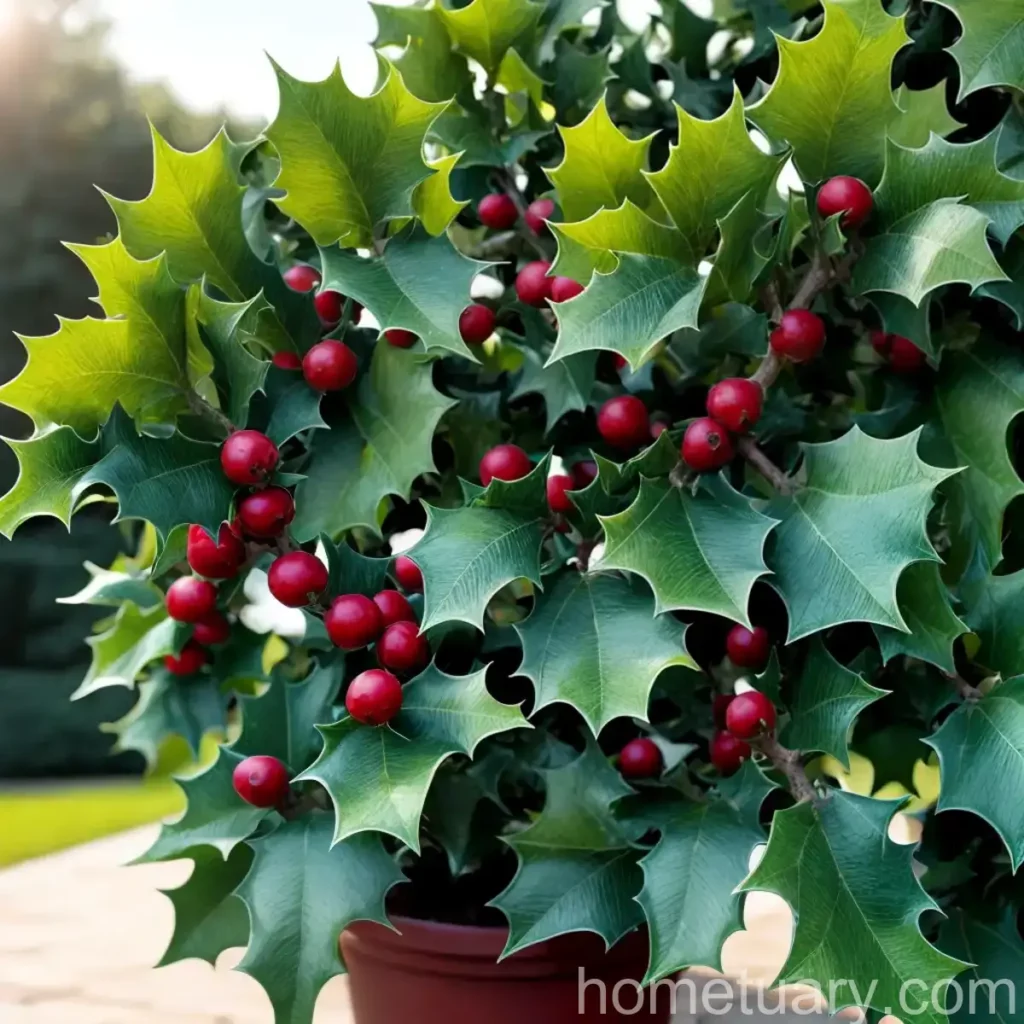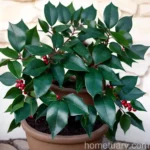English Holly (Ilex aquifolium): An Essential Guide for Plant Enthusiasts
Plants have always been an integral part of human life and culture. From providing food and shelter to being a source of inspiration, plants enrich our lives in numerous ways. In this comprehensive guide, we will explore the fascinating world of English holly (Ilex aquifolium). From its characteristics and cultivation to its uses and symbolism, this blog post will serve as an essential resource for plant enthusiasts, gardeners, and botany aficionados.
What is English Holly (Ilex aquifolium)?
English holly, scientifically known as Ilex aquifolium, is an evergreen shrub or small tree that belongs to the Aquifoliaceae family. Native to western and southern Europe, northwest Africa, and southwest Asia, it is widely cultivated for its glossy, spiny leaves and bright red berries. English holly is a popular ornamental plant and is often associated with festive decorations during the holiday season.
Characteristics of English Holly
- Foliage: The leaves of English holly are leathery, glossy, and dark green in color. They are typically spiny and have a distinctive wavy or serrated margin.
- Flowers: Inconspicuous white flowers bloom in late spring to early summer and are followed by clusters of bright red berries in the fall.
- Size: English holly can reach a height of 15-30 feet, making it a versatile plant for both landscaping and garden use.
- Habit: It has a dense and bushy growth habit, making it an excellent choice for hedges and borders.
- Wildlife Habitat: The berries of English holly are a valuable food source for birds, adding to its ecological significance.
Now that we have an overview of the plant, let’s delve into the key aspects of cultivating and caring for English holly.
Key Takeaways – English Holly (Ilex aquifolium)
Cultivation
Uses
English holly is a versatile plant with various uses:
- Ornamental Purposes: Its glossy foliage and vibrant berries make it a popular choice for ornamental landscaping and decorative arrangements, particularly during the holiday season.
- Wildlife Habitat: The berries of English holly serve as a crucial food source for birds and other wildlife during the winter months.
- Symbolism: In folklore and cultural traditions, English holly is often associated with symbols of protection, luck, and resilience.
Water
English holly has moderate water needs and prefers well-drained soil. It is important to water newly planted holly regularly, ensuring that the soil stays consistently moist. Once established, it is relatively drought-tolerant, although regular watering during prolonged dry spells is recommended.
Sunlight
English holly thrives in partial to full sunlight, making it suitable for a wide range of light conditions. However, it is essential to avoid planting it in areas with intense afternoon sun, as this can cause leaf scorch.
Fertilizer
Fertilization is an important aspect of caring for English holly. A balanced, slow-release fertilizer applied in early spring can help promote healthy growth and abundant foliage and berries. Additionally, incorporating organic matter into the soil during planting can provide essential nutrients for the plant.
Soil
English holly prefers slightly acidic to neutral soil with good drainage. Amending the soil with organic matter, such as compost or peat moss, can improve fertility and drainage, creating an optimal growing environment for the plant.
Pruning
Pruning English holly is essential for maintaining its shape and promoting dense growth. It is best to prune the plant in late winter or early spring before new growth begins. Additionally, pruning can help control the size of the plant and prevent it from becoming overgrown.
Propagation
English holly can be propagated through both seeds and cuttings. While seeds require stratification for successful germination, semi-hardwood cuttings taken in late summer or early autumn can be used to propagate the plant with higher success rates.
Container Popularity
English holly is well-suited for container gardening, allowing individuals to enjoy its ornamental features on patios, balconies, or small gardens. When grown in containers, it is essential to provide adequate drainage and ensure regular watering and fertilization to support healthy growth.
Common Diseases
While English holly is relatively resistant to diseases, it can be susceptible to certain fungal infections, including Phytophthora root rot and leaf spot diseases. Proper plant care practices, such as avoiding overwatering and providing good air circulation, can help prevent these issues.
Disease Diagnosis
Diagnosing diseases in English holly involves observing symptoms such as leaf discoloration, wilting, or lesions. In cases of suspected disease, it is advisable to consult with a plant pathologist or horticulture expert for accurate identification and treatment recommendations.
Common Pests
English holly may be affected by pests such as scale insects, aphids, and spider mites. Regular monitoring of the plant for signs of pest infestations and the implementation of integrated pest management strategies can help mitigate potential damage.
Botanist’s Tips
- Companion Planting: Pairing English holly with companion plants that share similar cultural requirements can create visually appealing and ecologically beneficial landscapes.
- Pruning Techniques: Utilize proper pruning techniques, such as selective branch removal and aesthetic shaping, to enhance the overall appearance and health of English holly plants.
- Soil Care: Maintaining well-drained, organically enriched soil is crucial for promoting vigorous growth and minimizing the risk of root diseases in English holly.
Now that we have covered the essential aspects of English holly cultivation and care, let’s explore some intriguing facts about this remarkable plant.
Fun Facts
- In ancient Roman and Celtic traditions, English holly was considered a symbol of protection and was often used in rituals and celebrations.
- The vibrant red berries of English holly serve as an essential food source for birds during the winter, contributing to its ecological significance.
- The leaves and berries of English holly are toxic to humans and pets if ingested, emphasizing the need for caution when handling the plant.
Links to External Resources
For additional information on English holly (Ilex aquifolium), its cultivation, uses, and more, explore the following external resources:
- Royal Horticultural Society – Ilex aquifolium
- American Holly Society – English Holly: The British Friend
- Clemson Cooperative Extension – Holly Diseases & Insect Pests
In conclusion, English holly (Ilex aquifolium) is a plant of great cultural, ecological, and ornamental significance. Whether adorning festive decorations or providing sustenance for wildlife, its enduring appeal and versatile nature make it a cherished addition to gardens and landscapes. By understanding its unique characteristics, cultural significance, and proper care guidelines, plant enthusiasts can fully appreciate the beauty and value of English holly in diverse settings.
As we continue to explore the wonders of the plant kingdom, let’s celebrate the enduring legacy of English holly and its timeless contributions to our natural and cultural heritage.
References:
1. Ghelardini, L., Luchi, N., Pecori, F., Paris, P., & Santini, A. (2014). Ilex aquifolium as the source of a new biocontrol agent for managing tree diseases caused by Phytophthora. Forest Pathology, 44(6), 460-467. https://onlinelibrary.wiley.com/doi/abs/10.1111/efp.12122
2. Adams, R. P., Habte, M., & Park, S. (2016). *Common garden holly: Ilex aquifolium.: In Plant Breeding Reviews, Second Edition (Vol. 27, pp. 299-336). Wiley. https://onlinelibrary.wiley.com/doi/abs/10.1002/9781119278076.ch7















